Showing 311–320 of 1175 results
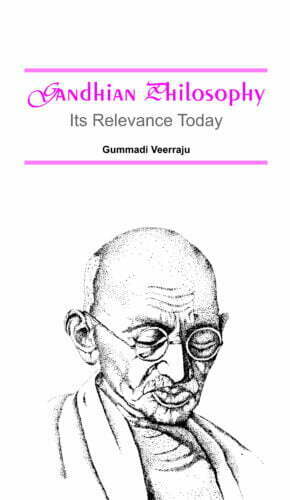
Retrieving a range of Gandhis social, economic, moral, spiritual, cultural and political ideas from various sources, this work gauges the relevance of Gandhi and Gandhism in the dehumanized, fragmented world of moral decay and unbridled consumerism.
Gandhi (1869-1948) held no political office. Yet he could arouse the conscience of an entire subcontinent! A lean, frail, half-naked fakir armed with a wooden staff and simple dignity of a human being, he fought against the greatest empire, the world has known. It was just the moral grandeur of his soul which enabled him to fight against brute power, in any form, even vanquish it. Generations to come will scarce believe that such a one as this in flesh and blood walked upon this earth, said Professor Einstein of him. A saint, social activist and political philosopher, unlike any other known in the twentieth century, Mohandas Karamchand Gandhi held out a message which, based on a series of his experiments with truth, touched upon every domain of human life: social, economic, moral/spiritual, cultural, political. Retrieving a range of these ideas from a variety of sources, this book tries afresh to gauge how far Gandhi and Gandhism are relevant in this dehumanized, fragmented world, perched dangerously on stockpiles of all-devastating arsenal; or in this age of distrust, moral decay and unbridled consumerism; or yet again when seen against todays aggressive/retaliatory attitudes, or against the growing cult of violence. The book is not just a revalidation of Gandhian philosophy, but a reminder as well, suggesting how in his abiding solutions alone: with their eloquent underpinnings of truth, non-violence and service of humanity, lies the hope for mankind in this conflict-ridden world.
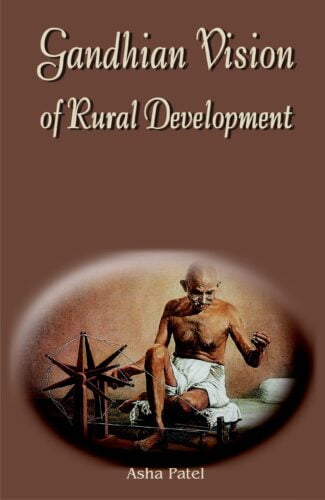
Contemporary relevance of Gandhian economic thought, focussing on Rural Industrialization, and its suitability as a panacea for extant economic problems by critically analyzing various Gandhian approaches along with his vision of Gram swarajya forms the central theme of this work.
The contemporary relevance of Gandhian economic thought with special focus on the rural industrialization forms the central theme of this book. Policies related to planned economy after Independence have not brought the desired changes. Uncontrolled, unplanned and un-regulated industrialization and urbanization have led to many disastrous consequences. In view of this, the book explores the suitability of Gandhian model as a possible remedy for the various economic problems in developing societies. Thus, various Gandhian approaches have been critically analysed with regard to rural and farm development, utilization of human labour and their skill, development with equity, decentralized development, his vision of Gram Swarajya etc. The book also brings out the various facets of the different voluntary organizations working in this area and their constructive contribution. The book, undoubtedly, is a meaningful contribution to the study of Gandhian economic thought. This will be very useful to the students at under-graduate and post-graduate level. This would also serve as a reference book for researchers, Gandhian and Sarvodaya institutions. This will be quite helpful to decision makers in framing and implementing agricultural, industrial and environmental policy.
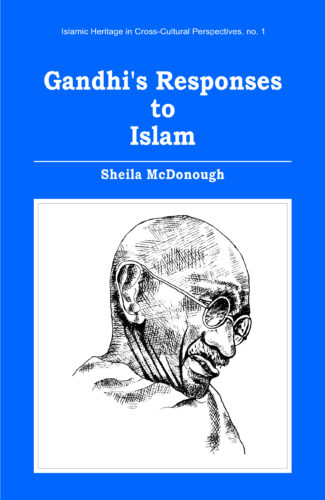
In this first-ever study exploring exclusively Gandhis attitude to Islam, the author puts together many of Gandhis observations about Prophet Mohammed, the holy Quran, and the Islamic faith.
Look at him as we may: whether as an exceptional human being, a modern-age prophet, a unique politician, or a charismatic leader of non-violent movement, Gandhis many-sidedness is proverbial. And, then, he was a religious genius as well with genuine tolerance and respect for all mankinds faiths. Here is the first ever study exploring exclusively Gandhis attitude to Islam, from his childhood to the last years of his phenomenally eventful life. In thematically focussing on his responsiveness to Islam, Dr. Sheila McDonough addresses a vital question: Why did Gandhi say the things, he did, about Islam? Which leads her to meticulously trace, among other determinants, the intellectual influences that had helped shape Gandhis vision of Islam the vision he particularly shared with many of his Indian contemporaries. The author, a widely known authority on Islamic Studies, puts together many of Gandhis observations about Prophet Mohammed, the holy Quran, and the Islamic faith to emphasize that his positive, respectful response to Islam was not a matter of political pragmatism, nor a facade to unify Indians at a critical period of their history, but it went far beyond to a philosophical understanding of the very essence of Islam. Unfailingly convincing, Prof. McDonough combines, in her writing, a rare scholarship with readability that makes her book at once fascinating to both specialists and common readers anywhere in the modern world.
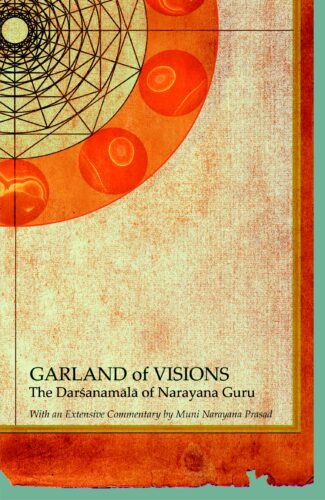
In his most important Sanskrit work Darshanamala, Narayana Guru adopts uncharted method of viewing the non-dual Brahman leaving the student-seeker to intuitively perceive one ineffable Reality. The ancient Upanishadic wisdom is thus condensed and restated by the Guru in the Age of Science. How brahmavidya naturally becomes the Science of all sciences.
In his most important Sanskrit work Darsanamala, Narayana Guru adopts a hitherto uncharted method of viewing the non-dual Brahman from ten different philosophical vantage points and leaving the student-seeker to intuitively perceive on one’s own the one ineffable Reality. The ancient Upaniùadic wisdom is thus condensed and restated by the Guru in terms comprehensible to the mind-set of the Age of Science. How brahmavidya naturally becomes the Science of all sciences (sarva-vidya-pratistha) is also implicit in the Guru’s restatement of Vedantic wisdom. The present commentary explicates how a genuine seeker could make use of the text for the realization of Brahman as the Reality that constitutes the being of himself or herself, and how each of its ten chapters lay bare a particular facet of Brahman fully resonant with the frame of reference of the chapter concerned.

This anthology raises, discusses and debates issues, aesthetics and techniques connected with the Indian theatre in the backdrop of political, social and moral values of women in theatre. Unearthing the dynamics of gender, it fills up the vacuum of scholarly literature on the role of women in theatre.
This book explores the presence and contribution of women to the recorded history of Indian theatre. It provides a platform to raise, discuss and debate issues, aesthetics and techniques connected with the Indian theatre in the backdrop of political, social and moral values of women in theatre. An attempt to fill up the vacuum of scholarly literature on the role of women in theatre, this book expects to create enough academic value and interest. Its content unearths the dynamics of gender in the history of theatre. It extensively deals with the theoretical and practical aspects of women’s theatre.
This anthology also addresses the various social issues associated with gender inequality through essays, play-texts and interviews. In a similar vein, it delves deep into the relationship among theatre, public/private sphere and gender. This work purports to address a variety of needs of feminist researchers and laymen who are not conversant with the contribution of women to theatre and its obvious political and transformative intent.
This collection also intends to see how the theatrical space could unsettle the gendered binaries regulating women’s presence in public space, and proposes to see why and how relevant feminist politics is in re-imagining a vibrant and inclusive concept of gender fairness and justice in contemporary India. It extends high referral value for researchers, students and even laymen with interest in the role of women in theatre.
Gita Govinda, a drsya-kavya of Jayadeva, a twelfth-century Sanskrit poet, due to its deep foundations in devotion and exquisite intrinsic beauty, is the most desired in the music and dance of India. This erotic poem, through its three characters in Radha, Krsna and the sakhi, portrays physical love as a metaphor for divine longing of the individual soul to have its union with the Supreme.
The volume in hand presents the primacy of the language in linguistic and literary theories as the vehicle of thought, along with the performing arts background and technical aspects of dance that complement Jayadeva’s composition. It also deals with a setting for the Gita Govinda in terms of its historical context, time, cultural influences and relevance in the arts.
It addresses each and every verse of Gita Govinda with translation and literary notes. Also, it showcases the uninterrupted text in Devanagari along with Romanized transliteration. In a nutshell, the book brings to us a magical world of dance and music through the eyes of a Sanskrit scholar and a mature, expressive dancer in Sharda Narayanan and Sujatha Mohan, respectively.
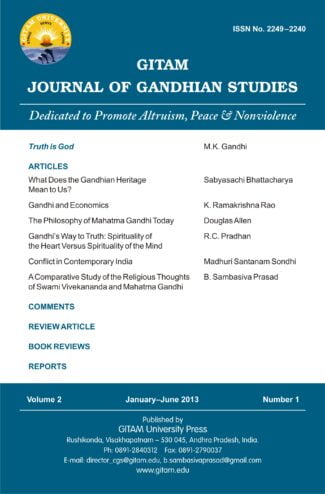
An Interdisciplinary, international journal, GITAM Journal of Gandhian Studies focuses on Mahatma Gandhi as one of the persona gratissima of modern age Þ his thought and practices, his ideas and their applications, peace and nonviolence. It publishes research papers; critical, constructive and scholarly reviews and discussions, etc.
Gitam Journal of Gandhian Studies is an interdisciplinary, international journal of Gandhian thought and practices, peace and non-violence. It publishes articles on Gandhi, his ideas and their application in the context of real-world problems and their resolution, ranging from rural development to global peace and from personal transformation to social change. It covers among other areas politics and public welfare, philosophy and values, education and personal growth, non-violence and conflict resolution. The Journal encourages critical, constructive and scholarly reviews and discussions with the goal of understanding the relevance and application of the Gandhian concepts and models.
In addition to research papers, the Journal publishes book reviews and readers comments, review articles of seminars and conferences, as well as calendar of events worldwide relating to Gandhi, non-violence and peace appear regularly in the Journal.

An Interdisciplinary, international journal, GITAM Journal of Gandhian Studies focuses on Mahatma Gandhi as one of the persona gratissima of modern age Þ his thought and practices, his ideas and their applications, peace and nonviolence. It publishes research papers; critical, constructive and scholarly reviews and discussions, etc.
Gitam Journal of Gandhian Studies is an interdisciplinary, international journal of Gandhian thought and practices, peace and non-violence. It publishes articles on Gandhi, his ideas and their application in the context of real-world problems and their resolution, ranging from rural development to global peace and from personal transformation to social change. It covers among other areas politics and public welfare, philosophy and values, education and personal growth, non-violence and conflict resolution. The Journal encourages critical, constructive and scholarly reviews and discussions with the goal of understanding the relevance and application of the Gandhian concepts and models.
In addition to research papers, the Journal publishes book reviews and readers comments, review articles of seminars and conferences, as well as calendar of events worldwide relating to Gandhi, non-violence and peace appear regularly in the Journal.
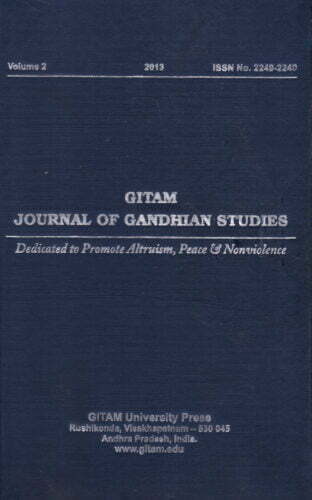
An Interdisciplinary, international journal, GITAM Journal of Gandhian Studies focuses on Mahatma Gandhi as one of the persona gratissima of modern age Þ his thought and practices, his ideas and their applications, peace and nonviolence. It publishes research papers; critical, constructive and scholarly reviews and discussions, etc.
Gitam Journal of Gandhian Studies is an interdisciplinary, international journal of Gandhian thought and practices, peace and non-violence. It publishes articles on Gandhi, his ideas and their application in the context of real-world problems and their resolution, ranging from rural development to global peace and from personal transformation to social change. It covers among other areas politics and public welfare, philosophy and values, education and personal growth, non-violence and conflict resolution. The Journal encourages critical, constructive and scholarly reviews and discussions with the goal of understanding the relevance and application of the Gandhian concepts and models.
In addition to research papers, the Journal publishes book reviews and readers comments, review articles of seminars and conferences, as well as calendar of events worldwide relating to Gandhi, non-violence and peace appear regularly in the Journal.
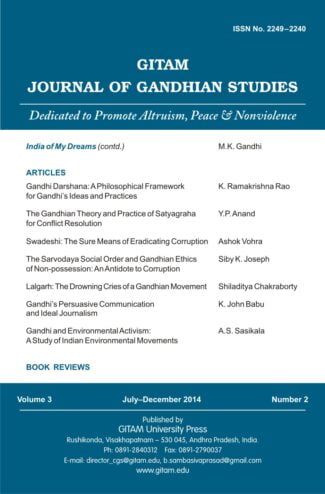
Gitam Journal of Gandhian Studies is an interdisciplinary, international journal of Gandhian thought and practices, peace and non-violence. It publishes articles on Gandhi, his ideas and their application in the context of real-world problems and their resolution, ranging from rural development to global peace and from personal transformation to social change. It covers among other areas politics and public welfare, philosophy and values, education and personal growth, non-violence and conflict resolution. The Journal encourages critical, constructive and scholarly reviews and discussions with the goal of understanding the relevance and application of the Gandhian concepts and models.
In addition to research papers, the Journal publishes book reviews and readers comments, review articles of seminars and conferences, as well as calendar of events worldwide relating to Gandhi, non-violence and peace appear regularly in the Journal.
Gitam Journal of Gandhian Studies is an interdisciplinary, international journal of Gandhian thought and practices, peace and non-violence. It publishes articles on Gandhi, his ideas and their application in the context of real-world problems and their resolution, ranging from rural development to global peace and from personal transformation to social change. It covers among other areas politics and public welfare, philosophy and values, education and personal growth, non-violence and conflict resolution. The Journal encourages critical, constructive and scholarly reviews and discussions with the goal of understanding the relevance and application of the Gandhian concepts and models.
In addition to research papers, the Journal publishes book reviews and readers comments, review articles of seminars and conferences, as well as calendar of events worldwide relating to Gandhi, non-violence and peace appear regularly in the Journal.
| There are no products |